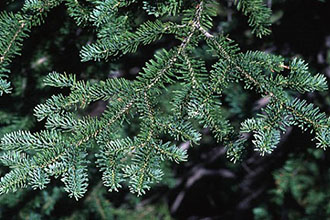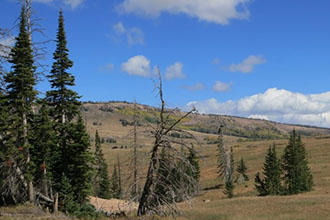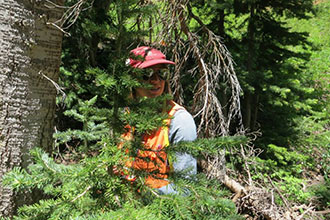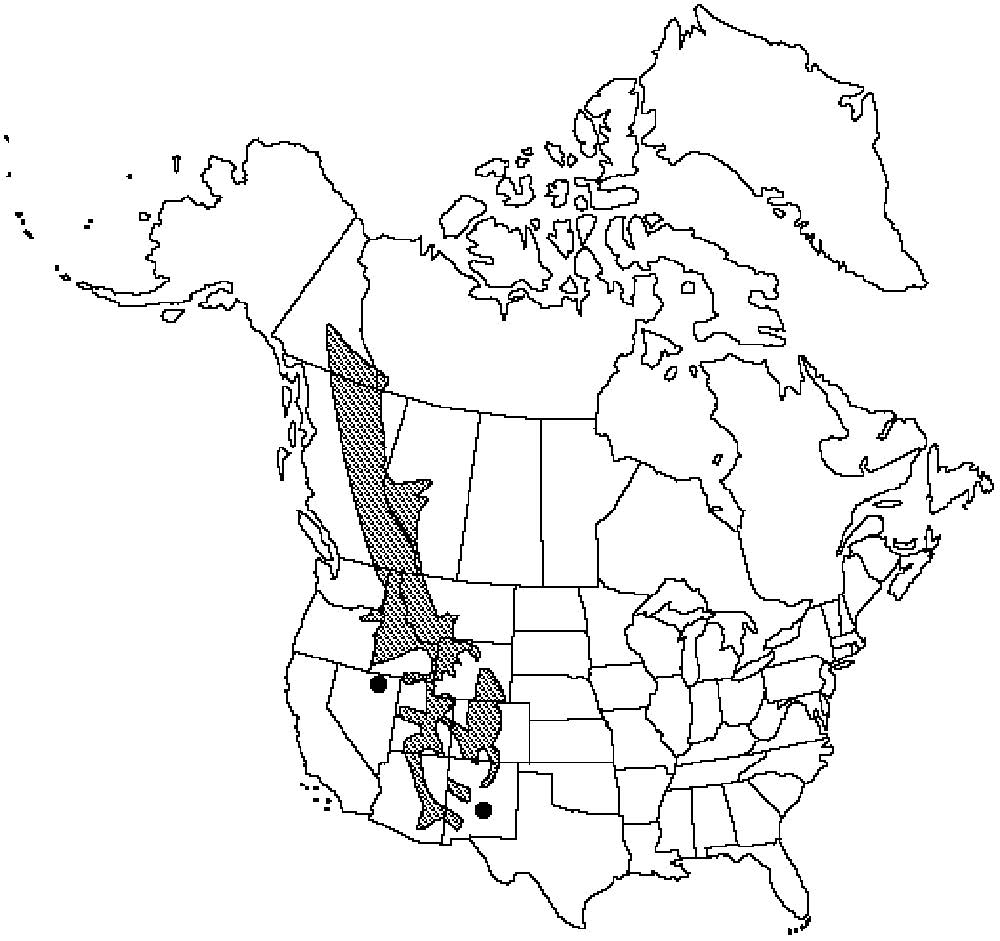Taxonomy: Kingdom - Plantae (plants). Subkingdom - Tracheobionta (vascular plants). Superdivision - Spermatophyta (seed plants). Division - Coniferophyta (conifers). Class - Pinopsida. Order - Pinales. Family - Pinaceae (pines). Genus - Abies Mill. Species - Abies bifolia A. Murray bis
Abies bifolia has been, and often still is, included in synonymy under A . lasiocarpa or A . subalpina since about 1890, and A . subalpina under A . lasiocarpa since about the 1920s. Abies bifolia is distinct from A . lasiocarpa, however, in chemical tests on wood (H.S. Fraser and E.P. Swan 1972), lack of crystals in the ray parenchyma (R.W. Kennedy et al. 1968), lack of lasiocarpenonol (J.F. Manville and A.S. Tracey 1989), and distinct terpene patterns (R.S. Hunt and E.von Rudloff 1979). Abies bifolia also tends to have slightly shorter and fewer prominently notched leaves than A . lasiocarpa. The two are clearly separated by the color of their periderm and by the shape of their basal bud scales. These firs may be more distinct than the pairs A . balsamea -- A . fraseri and A . procera -- A . magnifica. A north-south transect, however, from south central Yukon to northern Washington yielded introgressed trees possessing characteristics of both A . lasiocarpa and A . bifolia, recalling the interior spruce (Canadian Forestry Service 1983), which has characteristics of both Picea glauca and P . engelmannii.
Ecology: In the Rocky Mountains, subalpine fir is a shade-tolerant climax species favored by long fire-free intervals. Its seedlings outcompete spruces, lodgepole pine, and Douglas-fir when light intensities are less than 50 percent of full sunlight, but cannot compete with these conifers under brighter light. In Montana and Idaho and in the mountains of eastern Washington and eastern Oregon, subalpine fir often forms pure stands at climax, but it may also mix with Engelmann spruce, which, although considered to be seral to subalpine fir, outlives it and persists to climax. In the Rocky Mountains north and south of Montana and Idaho, Engelmann spruce and subalpine fir may codominate at climax. Throughout much of the Cascade Mountains subalpine fir grows as a shade-intolerant, seral species and is gradually replaced by more shade-tolerant associates such as Pacific silver fir, grand fir, and mountain hemlock. It often invades recently disturbed areas with lodgepole pine. It also pioneers harsh sites on raw geologically young surfaces such as lava flows and talus slopes and on climatically harsh sites near timberline.



